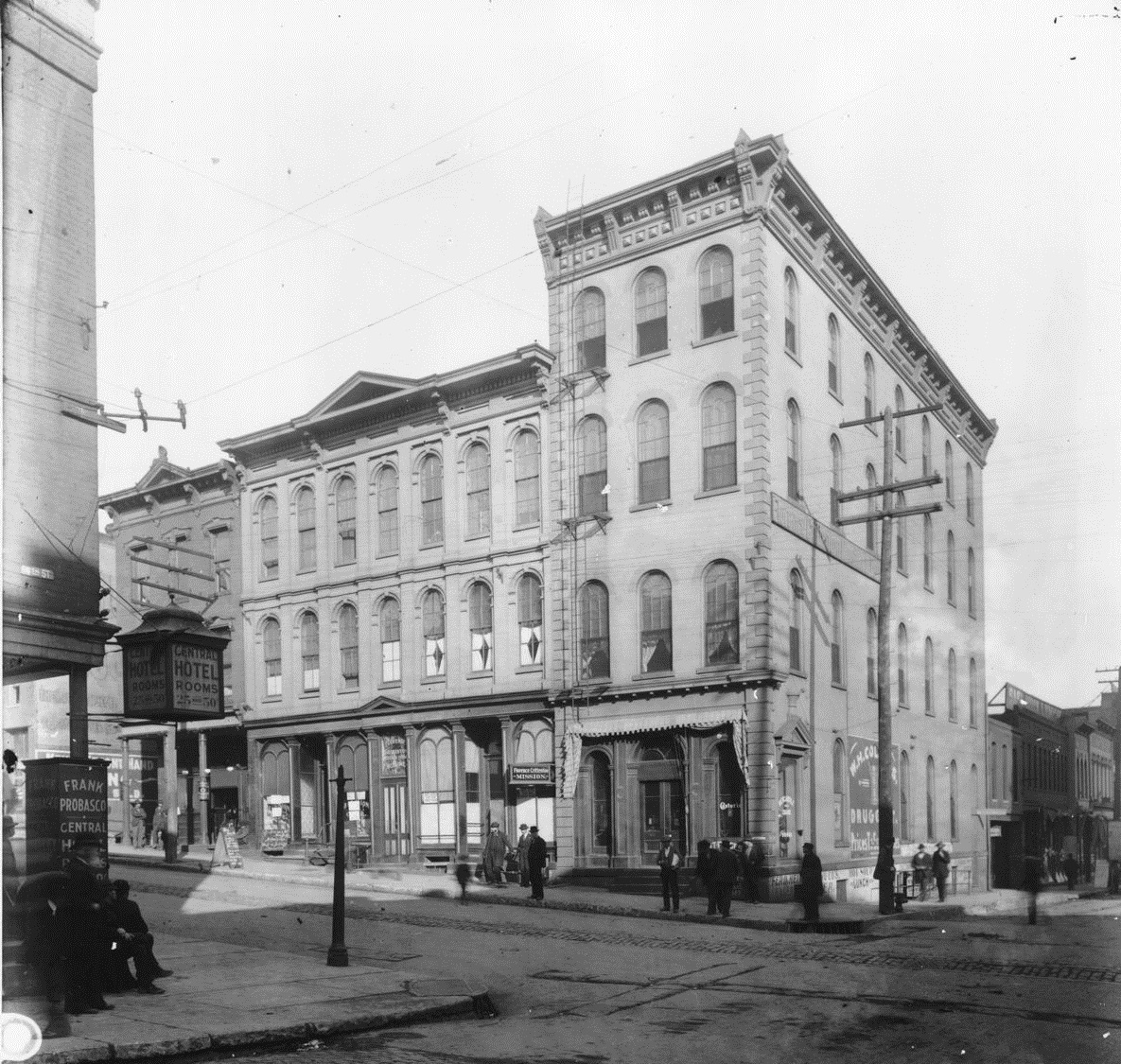Elizabeth Bruce Crogman
- Date of Birth: May 1, 1894
- Place of Birth: Pittsburgh, Pennsylvania
- Claim to Fame: Founder, Florence Home for Colored Girls at 2446 Michigan Street (1925), relocated to 2228 Campbell Avenue (1930)
- Spouse: Dr. W.H. Bruce; later Dr. Leon C. Crogman
- Formerly Known As: Elizabeth Bruce
- Date of Death: January 23, 1992
- Final Resting Place: St. Mary's Cemetery
Elizabeth Bruce Crogman, who in 1925 became founder of Kansas City’s Florence Home for Colored Girls to house unwed African American women who were pregnant, was born in Pittsburgh, Pennsylvania on May 1, 1894. The home functioned as the counterpart to similar organizations that served the area's white residents but denied care to young black women. Under Crogman's guidance through the 1940s, the Florence Home for Colored Girls eventually expanded to offer counseling, education, shelter, and medical care to dozens of Kansas City's impoverished black mothers and children.

The Florence Home was named after the daughter of New York drug maker Charles N. Crittenton. Florence died from scarlet fever in 1882, at the age of four. Distraught after his daughter's tragic death, Charles became aware of the number of homeless female immigrants in New York. In 1883, he founded the Florence Crittenton Home to provide shelter for "erring and wayward" women. This label referenced the former prostitutes that the New York home first served, but it also reflected a widespread stigma surrounding any childbirth outside of traditional marriages at the time.
While perhaps overly judgmental of the recipients of his aid, Crittenton wanted to provide care and opportunities to make it possible for former prostitutes and other young impoverished mothers to raise their children into a better life. He embarked on a trip to found 64 additional homes across the nation. In 1896, with the support of 14 local businessman, one of these homes (also called the Florence Crittenton Home) opened in the City Market area of Kansas City. It began as a home for prostitutes and later evolved a focus on unwed mothers.
Elizabeth Bruce Crogman had come to Kansas City with her first husband, Dr. W.H. Bruce, to Kansas City, in the early 1920s. She volunteered for the Urban League and the Juvenile Court of Jackson County in Kansas City. From this experience, she gained sympathy for single black mothers who lacked shelter, food, and access to adequate medical care during pregnancy and while raising their children. These mothers did not have access to Kansas City's Florence Crittenton Home. Elizabeth Bruce responded in 1925 by opening the Florence Home for Colored Girls at 2446 Michigan Street in the Wendell Phillips neighborhood. The home benefited from the generous support of philanthropist William Volker, the owner of the William Volker and Company home furnishings stores. The endeavor started as little more than four bedrooms that housed several unwed black mothers and their children. Bruce directed the home and provided moral and educational guidance to its inhabitants.
The home soon outgrew its limited facilities, and Bruce sought to expand. Volker funded the expansion with a large $10,000 gift, complemented by Mrs. William N. Marty's donation of land at 24th and Campbell Avenue.The new four-story, colonial-style facility opened in 1930 at 2228 Campbell Avenue. It provided shelter, medical care, education, and counseling for 30 women and their children. Volunteer physicians, nurses, counselors, teachers, and religious leaders offered various services to the occupants so that they could become successful and ultimately independent mothers.
Bruce remained in charge of the home until she retired in 1945. In 1958, it was renamed the Florence Home. By the time the facility received the new name, Bruce had divorced her husband, gotten remarried to a dentist named Dr. Leon C. Crogman, and taken the name Elizabeth Crogman. Elizabeth lived in Ohio with her new husband until she returned to Kansas City after his death. The Florence Home that she founded continued its original mission until the 1970s, when it merged with the Florence Crittenton Home and became racially integrated. By 1996, the Crittenton home (now a part of the St. Luke's-Shawnee Mission Health System) had evolved into a 156-acre mental health facility for children and their parents. Today it remains one of nearly half of the original 65 Crittenton homes that still exist in one form or another.
Elizabeth Crogman continued volunteering for the community until her health no longer permitted it in 1991. On January 23, 1992, she died at the age of 97 at the Swope Ridge Geriatric Center and was buried in St. Mary's Cemetery. Her generosity may long be remembered by the children and descendents of the children who were born in or cared for by the Florence Home. Her spirit is best summarized by Reverend D.A. Holmes, from the Paseo Baptist Church, who once said, "I do not know of a woman in America superior to Elizabeth Crogman... her inspiration certainly came from heaven."
This article has been adapted from an article published at KChistory.org.
This work is licensed under a Creative Commons Attribution-NonCommercial-NoDerivatives 4.0 International License.
